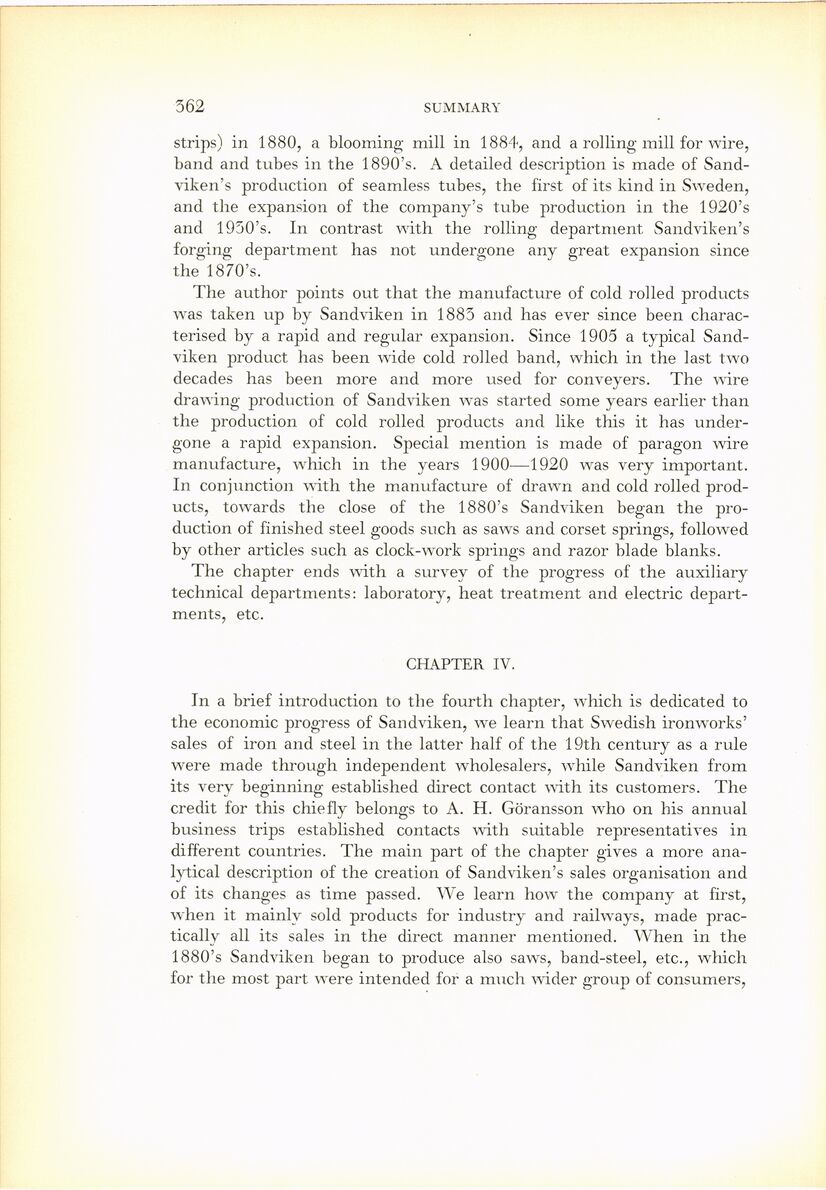
Full resolution (JPEG) - On this page / på denna sida - Summary in English - Chapter III - Chapter IV

<< prev. page << föreg. sida << >> nästa sida >> next page >>
Below is the raw OCR text
from the above scanned image.
Do you see an error? Proofread the page now!
Här nedan syns maskintolkade texten från faksimilbilden ovan.
Ser du något fel? Korrekturläs sidan nu!
This page has never been proofread. / Denna sida har aldrig korrekturlästs.
562
SUMMARY
strips) in 1880, a blooming mill in 1884, and a rolling mill for wire,
band and tubes in the 1890’s. A detailed description is made of
Sandviken^ production of seamless tubes, the first of its kind in Sweden,
and the expansion of the company’s tube production in the 1920’s
and 1950’s. In contrast with the rolling department Sandviken’s
forging department has not undergone a ny great expansion since
the 1870’s.
The author points out that the manufacture of cold rolled products
was taken up by Sandviken in 1885 and has ever since been
charac-terised by a rapid and regular expansion. Since 1905 a typical
Sandviken product has been wide cold rolled band, which in the last two
decades has been möre and möre used for conveyers. The wire
drawing production of Sandviken was started some years earlier than
the production of cold rolled products and like this it has
undergone a rapid expansion. Special mention is made of paragon wire
manufacture, which in the years 1900—1920 was very important.
In conjunction with the manufacture of drawn and cold rolled
products, towards the close of the 1880’s Sandviken began the
production of finished steel goods such as saws and corset springs, followed
by other artides such as clock-work springs and razor blade blänks.
The chapter ends with a survey of the progress of the auxiliary
technical departments: laboratory, heat treatment and electric
depart-ments, etc.
CHAPTER IV.
In a brief introduction to the fourth chapter, which is dedicated to
the economic progress of Sandviken, we learn that Swedish ironworks’
sales of iron and steel in the latter half of the 19th century as a rule
were made through independent wholesalers, while Sandviken from
its very beginning established direct contact with its customers. The
credit for this chiefly belongs to A. H. Göransson who ön bis annual
business trips established contacts with suitable representatives in
different countries. The main part of the chapter gives a möre
ana-lytical description of the creation of Sandviken’s sales organisation and
of its changes as time passed. We learn how the company at first,
when it mainlv sold products for industry and railways, made
prac-ticallv all its sales in the direct männer mentioned. When in the
1880’s Sandviken began to produce also saws, band-steel, etc., which
for the most part were intended for a much wider group of consumers,
<< prev. page << föreg. sida << >> nästa sida >> next page >>